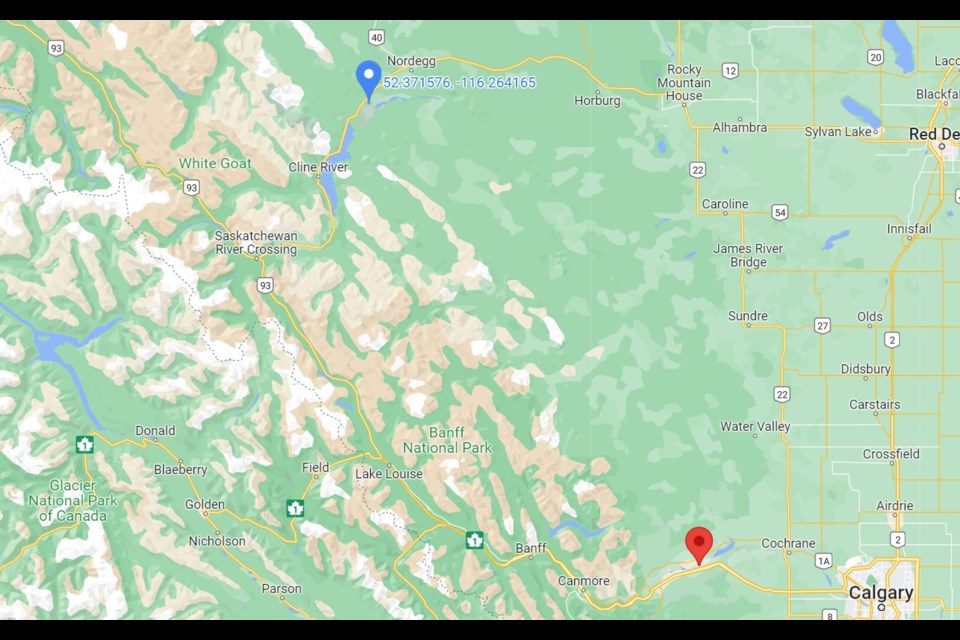STONEY NAKODA – A remote Îyârhe (Stoney) Nakoda First Nation community north of the main Nation reserve at Mînî Thnî is receiving a funding boost to help close the digital divide in the community.
Big Horn 144A, located in Clearwater County about 24 kilometres southwest of Nordegg, is one of more than 50 rural communities in the province that will benefit from the first funding allocation of $70.6 million by the governments of Alberta and Canada for projects that qualify for the Universal Broadband Fund (UBF).
Kerry Black, an assistant professor in the department of civil engineering and Canada research chair for integrated knowledge, engineering and sustainable communities at the University of Calgary, said the issue of internet connectivity is exacerbated in First Nations communities because of a lack of other core infrastructure.
“For First Nations across Canada who are already facing big infrastructure gaps, that connectivity piece just exacerbates what is already a massive deficit they’re facing,” said Black. “I don’t think everyone realizes the role that connectivity plays in being able to maintain your basic community infrastructure ... A big part of that now relies heavily on the ability to connect.”
Inequities in health, employment, and education are intensified by a lack of broadband internet access in Indigenous communities. For some, even if access to broadband internet is available, it’s either too expensive or they lack digital devices to use it.
According to the province, about 80 per cent of Indigenous communities and 67 per cent of rural and remote communities do not have access to reliable, high-speed internet, and none of the eight Metis Settlements in Alberta can access federal target speeds of at least 50 Megabits per second (Mbps) download and 10 Mbps upload.
The province’s Alberta Broadband Strategy aims to achieve those targets and universal connectivity throughout the province by the end of the 2026-27 fiscal year. It is the federal government's goal to connect 95 percent of Canadians by 2026 and 100 percent by 2030.
“Bringing better connectivity to these communities means they’re able to enhance a lot of those important programs and services they’ve been offering within that health and education spectrum,” said Black, most of whose experience has included working with and for Indigenous communities on urgent and pressing infrastructure issues across Canada, especially on water and wastewater management.
“The reality is connectivity has been left a little bit behind because there are very real public health priorities that take precedence. Historically, providing critical infrastructure hasn’t included connectivity because a Nation that has a certain amount of pocket funding will sooner prioritize access to clean drinking water over connectivity.”
Roughly 10,400 households, including more than 2,700 Indigenous households, are expected to benefit from the joint government investment. Of those, about 44 are in Big Horn, according to 2016 census data. There are about 237 people living in the community.
The funding is part of Alberta’s pledge to invest $390 million over the course of four years to improve access to high-speed internet in rural, remote and Indigenous communities. Ottawa has pledged to match that investment totalling $780 million. According to the Alberta government, reaching 100 per cent connectivity throughout the province will cost approximately $1 billion.
“Improving access to high-speed internet is one of the most powerful things we can do to support rural, remote and Indigenous communities across Alberta,” said Minister of Service Alberta Nate Glubish in a media release. “A reliable internet connection unlocks access to the essential services we rely on every day, supporting everything from online learning to better home health care.”
NDP agriculture and rural economic development critic Heather Sweet issued a statement in response, saying the funding is too little and coming too late to make an impact as soon as it is needed.
“Despite repeated promises for over a year to deliver funding, this comes too late to get shovels in the ground for this year’s construction season and is only a portion of the amount required to provide universal access to high-speed internet," said Sweet. "This means hundreds of thousands of Albertans without access to high-speed internet will have to wait even longer.”
Black said attitudes are shifting toward improving connectivity more urgently, particularly after two-and-a-half years of a global pandemic.
“We know now that many people were left behind, unprepared to make that virtual transition,” she said. “The digital divide has become a much stronger focus than it used to be.
“We’re starting to see that in order to actually provision all this infrastructure in the right way, you need to have that connectivity piece to really be successful.”
The Local Journalism Initiative is funded by the Government of Canada. The position covers Îyârhe (Stoney) Nakoda First Nation and Kananaskis Country.




